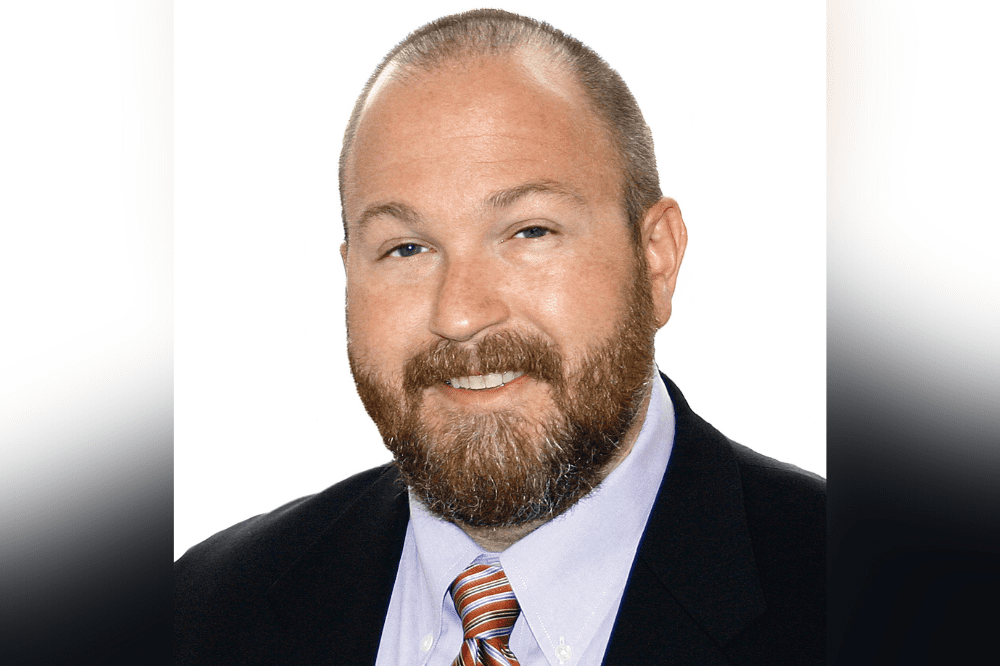What is causing more severe hurricanes in the North Atlantic?

Initial estimates tip the 2022 North Atlantic hurricane seasons as the third-most expensive to date, with overall losses of $110 billion, and insured losses in the magnitude of $65 billion (excluding the National Flood Insurance Program, NFIP).
“Not every hurricane season going forward is going to be hyperactive like the 2020 season or the 2005 season,” said Mark Bove (pictured), meteorologist and SVP of Natural Catastrophe Solutions, Munich Re US. “I think people started to get the expectation, after several very hyperactive seasons in a row, that it was always going to be like that.
“There’s always going to be variability. With 14 named storms this year, it may have been a little lower than originally anticipated, given the environments, but still in the long-term, that is an above-average number. Twenty (20) years ago, this would have been considered a quite active season for the North Atlantic.”
The 2022 season showed that “it takes just one powerful storm” to cause immense losses, according to Bove. Hurricane Ian, which slammed into the west coast of Florida on Sept. 28 with winds of almost 250 km/h, caused overall losses of around $100 billion, of which $60 billion will be borne by private insurers (excluding NFIP), according to Munich Re’s preliminary estimates.
The five costliest hurricane events
Munich Re’s NatCatSERVICE has projected that overall losses from Hurricane Ian will fall short of two giants: Hurricane Katrina in 2005 ($174 billion overall losses), and Hurricane Maria in 2017 ($100 billion overall losses).
The most expensive hurricane season to date for insurers was 2005, which destroyed assets of almost $240 billion, adjusted for inflation, of which $120 billion was insured.
What causes hurricanes?
The number of hurricanes in a single year is influenced by both local and large-scale weather systems and ocean temperatures. Despite significant advancements in predictive modeling, the exact number and location of storms making landfall cannot be accurately predicted.
“Since 1995, the North Atlantic has been in what we consider a period of heightened activity, particularly due to increased sea surface temperatures across the Atlantic,” explained Bove. “Warm sea surface temperatures are the fuel for hurricanes; it’s their battery, and by having more fuel, there’s more potential for storms to form and actually get more intense.
“Aside from the periodic warming associated with the North Atlantic meridional circulation in the ocean, we also have the background climate change impacts. The greenhouse gases that we are emitting into our atmosphere are trapping heat within the Earth’s system, but most of that trapped heat is going into the oceans, not atmosphere.
“Globally, the upper levels of our oceans have gotten dramatically warmer over the past couple of decades, and that extra reservoir of fuel, particularly in summer and in peak times in hurricane zones, can actually increase the potential of the storms becoming more intense, because there’s simply more fuel out there for these storms to use up and get stronger – considering all other factors are conducive for storm development.”
What is La Niña?
At the beginning of the 2022 North Atlantic hurricane season, all research institutes, including Munich Re, predicted a higher number of hurricanes due to prevailing La Niña conditions. This is a phenomenon that occurs as part of a cyclical climate oscillation in the Pacific (El Niño/Southern Oscillation, ENSO for short), which affects weather across the world.
La Niña conditions usually favour the development of hurricanes in the North Atlantic, particularly over the Caribbean Sea and Gulf of Mexico, because La Niña reverses wind shear in the upper atmosphere. This is the opposite to El Niño, where a high vertical wind shear prevents storms from intensifying or even developing.
The National Weather Service describes wind shear as “a change in wind speed with height,” stating that a low vertical wind shear, especially in the upper level of the atmosphere, is one of the most important ingredients for hurricane development. It adds: “Strong upper level winds destroy the storms structure by displacing the warm temperatures above the eye and limiting the vertical accent of air parcels. Hurricanes will not form when the upper-level winds are too strong.”
In addition to low vertical wind shear, other widely accepted conditions for hurricane development include:
Ocean waters must be above 26 degrees Celsius;
Distance from the equator of more than 5 degrees latitude;
Saturated lapse rate gradient near the center of rotation of the storm, which ensures latent heat will be released at a maximum rate;
High relative humidity values from the surface to the mid-levels of the atmosphere; and
A tropical wave, which will amplify and evolve into a tropical storm or hurricane.
“Hurricanes, as powerful as they are, actually are somewhat fragile,” Bove told Insurance Business. “If there are stronger winds aloft than at the surface, and it can’t keep that central column of its eye vertical, it’ll tip over and it won’t be able to intensify. With La Niña, the conditions get more favorable because there’s less wind shear, allowing the potential for more storms, particularly over the western Atlantic to develop.
“Because of this, we expect more storms and see more storms during La Niña, but it’s not the entire story; it is just one of the major factors. That’s why some of the forecasts were a little over-aggressive this year. Though we knew we were staying in a La Niña pattern, the amount of Saharan dust in the atmosphere, and the actual sea surface temperatures over the Atlantic for the early part of the season, were lower than expected, so that counterbalanced the shear factor this year, and is probably why it wasn’t as hyperactive as originally expected.”
How is climate change impacting hurricanes?
Munich Re chief climate scientist Ernst Rauch said: “2022 continues the trend of increasing losses from US hurricanes in recent years. Additionally, just a single storm like Ian is enough to cause immense losses. This is not new, of course, but it is important. Because it is precisely hurricanes like Ian – very strong storms with extreme precipitation – that will occur more frequently in the future due to climate change.”
Digging into that idea a little deeper, Bove said: “We expect, due to the increased oceanic heat content, that if all the other conditions are conducive, we’re going to get stronger storms as our climate warms. Also, because sea level is rising a few millimeters every year, a new storm surge occurs on top of a higher sea level, so that is slowly getting worse as well.”
According to Munich Re, the current state of research is that, although the total number of storms globally will not increase as a result of climate change, there will be a rise in the proportion of particularly severe storms and storms with extreme precipitation.
Is the insurance industry prepared to handle more severe storms? Let us know your thoughts in the comment section below.




